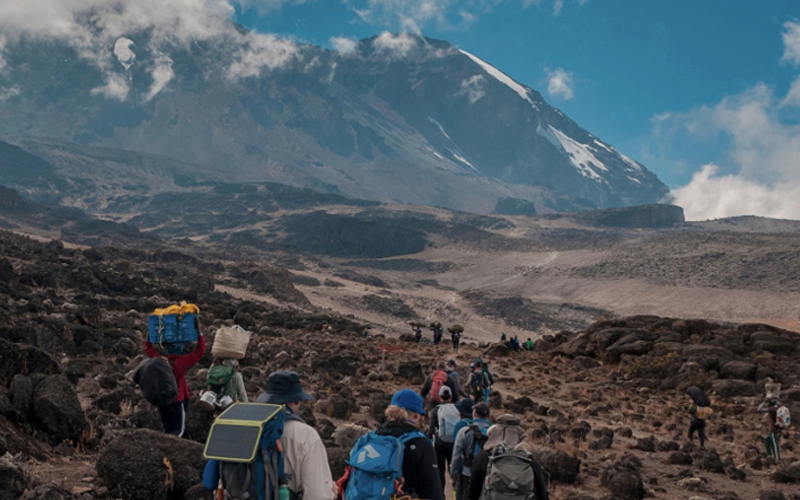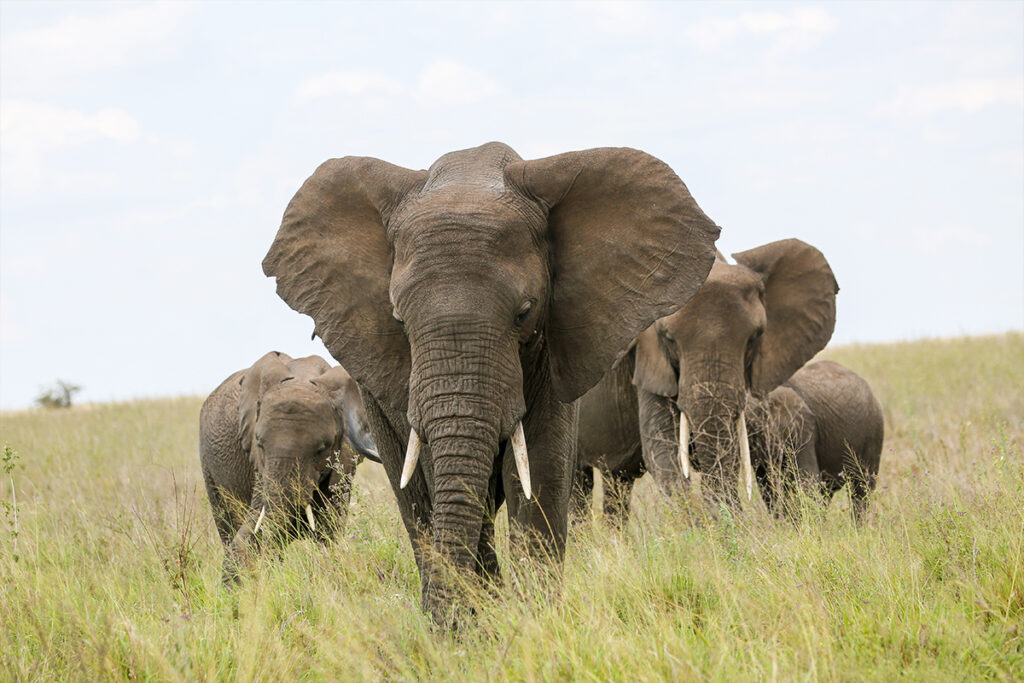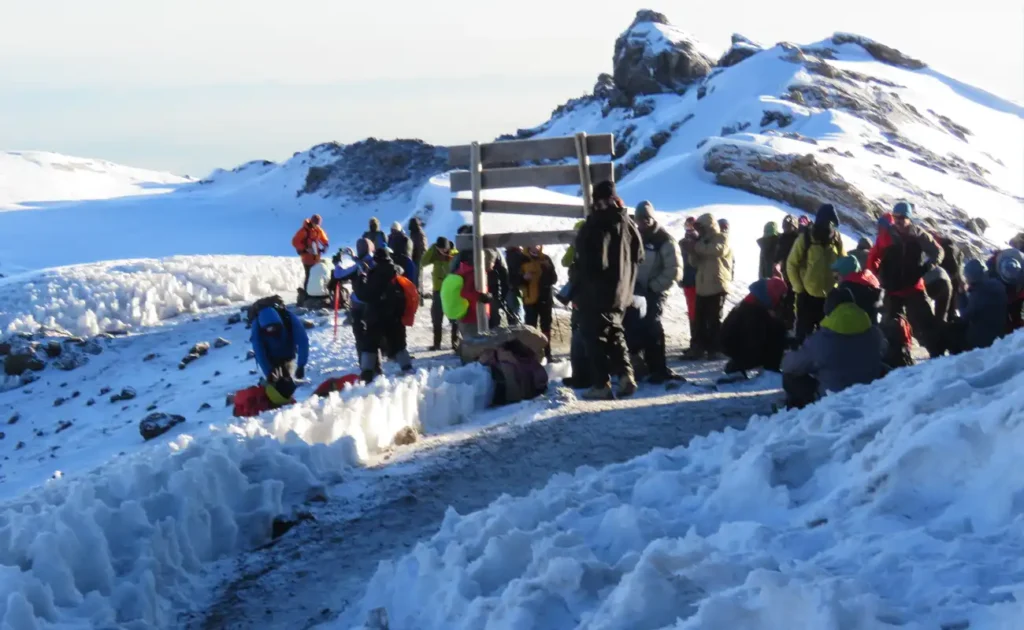Mount Kilimanjaro New Trekking Routes 2025
Mount Kilimanjaro, often regarded as one of the world’s most iconic trekking destinations, continues to captivate adventure-seekers from across the globe. Standing tall at 5,895 meters (19,341 feet), it’s not just a mountain; it’s an experience that offers trekkers the chance to witness breathtaking landscapes, diverse ecosystems, and cultures like no other place on Earth. As we move into 2025, there are several exciting updates that make this journey even more accessible and enjoyable. Let’s dive into what’s new for trekkers looking to summit the “Roof of Africa.”
Mount Kilimanjaro: A Quick Overview
Before diving into the new features for trekkers in 2025, let’s take a moment to appreciate what makes Mount Kilimanjaro so special. Located in Tanzania, East Africa, Kilimanjaro is the tallest mountain in Africa and one of the Seven Summits. Trekkers from around the world flock here, drawn by the allure of conquering this massive peak and experiencing its remarkable natural beauty.
The mountain is famous for its distinct ecological zones, which include lush rainforests at lower elevations, alpine meadows, and the glaciers at the summit. These diverse ecosystems offer trekkers a variety of landscapes and climates within the span of a few days.
The History and Legacy of Kilimanjaro
Kilimanjaro’s history stretches far beyond trekking. For centuries, it has been revered by the indigenous Chaga people, who live on its slopes. The mountain is seen not only as a natural wonder but also as a spiritual symbol. Over the years, Mount Kilimanjaro has become an emblem of human achievement as climbers from all walks of life have taken the challenge to summit it.
Trekking on Kilimanjaro also has its milestones, with the first successful summit taking place in 1889. Today, the trekking industry around Kilimanjaro is robust, with thousands of climbers each year. Its legacy continues to inspire both adventure lovers and environmentalists who seek to protect this majestic peak.
New Developments for Trekkers in 2025
So, what’s new for trekkers in 2025? Several exciting updates are in store, from route enhancements to new safety measures, making it an even more appealing destination.
Updates to Trekking Routes:
Each route to the summit of Kilimanjaro offers something unique, and improvements to these routes have made them more accessible and comfortable. In 2025, trekkers can expect enhanced infrastructure on key routes like the Lemosho, Machame, and Rongai.
Lemosho Route: This route, known for its scenic beauty, has been upgraded with new campsites and better facilities for trekkers. These additions help enhance the trekking experience, especially for those looking to take a slower pace.
Machame Route: The Machame route remains one of the most popular, and new trail enhancements ensure smoother trekking. Expect additional rest stops and upgraded toilets, providing greater comfort.
Rongai Route: This route, which enters from the northern side, has seen improvements in accessibility. The trail has been made more even and manageable for trekkers of varying skill levels.
New Safety Protocols:
Safety remains a top priority for all Kilimanjaro trekkers. In 2025, new safety protocols are in place to ensure a smoother, safer climb. These include mandatory pre-trek health checks, including fitness evaluations and altitude sickness assessments. Trekking companies now employ more experienced guides and support teams to handle any emergencies that arise, making the journey safer and more comfortable.
Eco-Friendly Initiatives:
Kilimanjaro has faced environmental challenges in recent years, from deforestation to pollution. However, the Tanzanian government and various trekking organizations have taken significant steps toward making the trek more eco-friendly. These include banning single-use plastics, promoting sustainable waste disposal methods, and introducing eco-friendly trekking gear.
As a trekker, you’ll be encouraged to participate in keeping the environment clean by using reusable water bottles and following strict waste management guidelines.
Technological Advancements for Trekkers
In the digital age, trekking on Kilimanjaro has gone high-tech. In 2025, a range of new apps and gadgets will help trekkers on their journey.
- Trekking Apps: Apps that track your progress, weather conditions, and even share real-time altitude sickness warnings have made trekking Kilimanjaro more streamlined.
- GPS Enhancements: With enhanced GPS systems, navigating Kilimanjaro is now easier and safer. You can follow trails and receive alerts, helping you stay on track.
Health and Safety Improvements
One of the primary concerns on Mount Kilimanjaro is altitude sickness. In 2025, there are enhanced measures in place to help trekkers adjust to the high altitude, including more frequent acclimatization days and better access to medical personnel. Oxygen supplies have also been increased, especially for those who require it during their ascent.
Cultural Immersion: Connecting with Local Communities
Ethical tourism is becoming increasingly important in 2025, and Kilimanjaro is no exception. Many trekkers now seek to connect with local communities, learning about the traditions of the Chaga people and supporting local businesses. Ethical tourism helps create jobs, supports local economies, and fosters cultural understanding.
Mount Kilimanjaro is evolving, and the year 2025 promises exciting updates for trekkers. Whether it’s improved routes, new safety measures, or enhanced cultural experiences, Kilimanjaro remains one of the world’s premier trekking destinations. No matter where you are in your adventure journey, the “Roof of Africa” continues to offer an experience unlike any other.
FAQs
What are the best routes for trekking Kilimanjaro in 2025?
- The Lemosho, Machame, and Rongai routes offer unique experiences with improved infrastructure and facilities.
How should I prepare physically for the Kilimanjaro trek?
- Training for altitude, endurance, and mental strength is key. Focus on cardiovascular fitness and long-distance hikes.
Can I trek Kilimanjaro in the off-peak season?
- Yes! Trekking in the off-peak season can offer a quieter experience, though weather conditions may vary.
What has changed with Kilimanjaro trekking permits in 2025?
- Permits can now be booked online, and prices have increased slightly.
Is it safe to trek Kilimanjaro in 2025?
- Yes, with new safety protocols, medical enhancements, and experienced guides, the trek is safer than ever.




